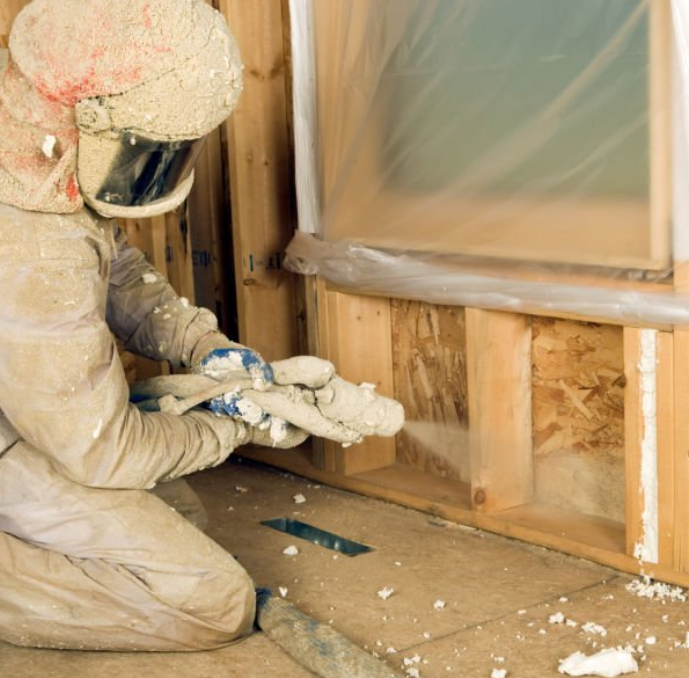One of the most effective and efficient methods of insulating houses and buildings is spray foam insulation. Our spray polyurethane foam (SPF) systems at The Green Cocoon concentrate on both open-cell and closed-cell applications to achieve airtight seals that will last a long time and save on energy bills, as well as environmental issues. However, a problem that occasionally surprises builders, homeowners and rookie insulation installers is the spray foam’s poor adhesion to engineered wood products like OSB (Oriented Strand Board) or LVL (Laminated Veneer Lumber).
Why does this problem occur, and how can we address it properly?
Here’s a quick breakdown on what causes spray foam adhesion troubles on engineered wood, using key insights from the Spray Polyurethane Foam Alliance (SPFA) Tech Tip I-5, and describes great practices to ensure proper insulation and overall performance.
The Problem: Why Spray Foam Adhesion Fails on Engineered Wood
The use of engineered wooden products has become a necessity in the construction sector today due to their durability, lower cost and accessibility. Sheathing, beams and subfloors are often manufactured from panels such as OSB, LVL beams, and others. But on the topic of spray foam insulation, they can create a hidden issue.
Many engineered wood surfaces are handled with wax, plastic, or resin-based coatings for the duration of production. These coatings are designed to:
- Increase moisture resistance
- Improve durability
- Increase ease of handling
While those features are advantageous to the building method, they can also act as obstacles to adhesion for spray polyurethane foam. The result:
- The SPF may fail to bond completely
- The foam may peel away from the surface after installation
- You may experience reduced air-sealing and insulation effectiveness
In some instances, this could cause separation or delamination, particularly in excessive moisture or high visitor traffic. For a product designed to form a continuous, hole-free thermal barrier, this is a critical issue.
SPFA-Recommended Fixes: How to Ensure Proper Adhesion
There are tried-and-tested solutions to this common spray foam difficulty. At The Green Cocoon, we follow great enterprise practices advocated by the SPFA to ensure long-term adhesion, especially while working with engineered timber.
1. Perform a Test Spray
Before insulating a surface, we complete a test-check spray. Same way that you might test a paint sample on a hidden wall. This helps us decide if the spray foam insulation will adhere well or if a bonding agent is preferred.
2. Use a Bonding Primer
If the foam fails to adhere as much as we would recommend, the SPFA advises the use of a bonding primer. Some of the most effective bonding options we would recommend:
- Kilz Adhesion Primer
- Zinsser Extreme Adhesion Primer
These primers are specially formulated to bond to sleek, plastic, or slick surfaces which include lined engineered timber. Applying a thin layer of primer ensures the SPF has a floor it is able to grip, preventing future detachment.
3. Use the Uncoated Side (If Possible)
In a few instances, engineered panels like OSB may also have a covered side and an uncoated side. If constructing orientation allows, it’s ideal to apply spray foam to the uncoated side. This naturally improves bonding without the need for primers.
4. Skip Ineffective Workarounds
DIY Homeowners and less experienced contractors may try methods like:
- Sanding the wood
- Scoring the surface
- Stapling mesh into the board
These techniques are not effective in ensuring long-term SPF adhesion. Sanding may also remove some of the coating which isn’t recommended, and the method is frequently not sufficient to resolve the issue. Only high quality primers are recommended in our industry and even some government standards.
Importance of Proper Adhesion
Spray foam insulation isn’t simply about stuffing a hollow cavity in a wall, it’s about expanding a monolith, continuous envelope that strengthens the energy performance and manages moisture as well as enhancing indoor comfort. When SPF fails to adhere properly to engineered wood, several problems can arise due to shrinkage and separation from the framing, including:
- Reduced racking strength and increased air leakage, leading to thermal gaps
- Delamination over time, especially under fluctuating humidity or temperature conditions
- A compromised moisture barrier, which can lead to mold hazards
- A weakened thermal barrier, reducing the insulation’s effectiveness
- Costly callbacks for repair or re-application
For developers, architects, and homeowners, these risks spotlight the significance of proper SPF application on all substrates, such as engineered wood.
Rely on the Experts to Get Long-life Spray Foam
It’s important to know that spray foam will not adhere to engineered wood and how to deal with it so that your insulation will do what it should. New construction, renovation, and any insulation upgrade should follow a systematic process to ensure success. Taking the proper steps at the beginning of a project can certainly prevent headaches in the future.
We go the extra mile at The Green Cocoon and admittedly, we are a family of insulation geeks. We believe in ongoing improvement in our industry and we strive to deliver results that meet or exceed building performance standards using eco-friendly products and meticulous craftsmanship.
Contact The Green Cocoon today for expert spray foam insulation services in Massachusetts, New Hampshire, and Southern Maine. Let’s insulate smarter, together.






